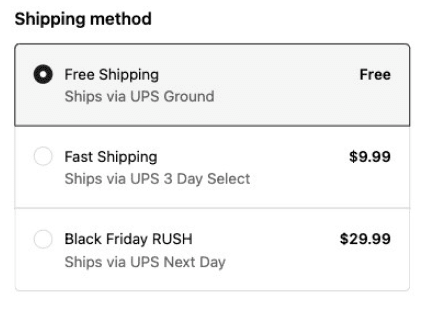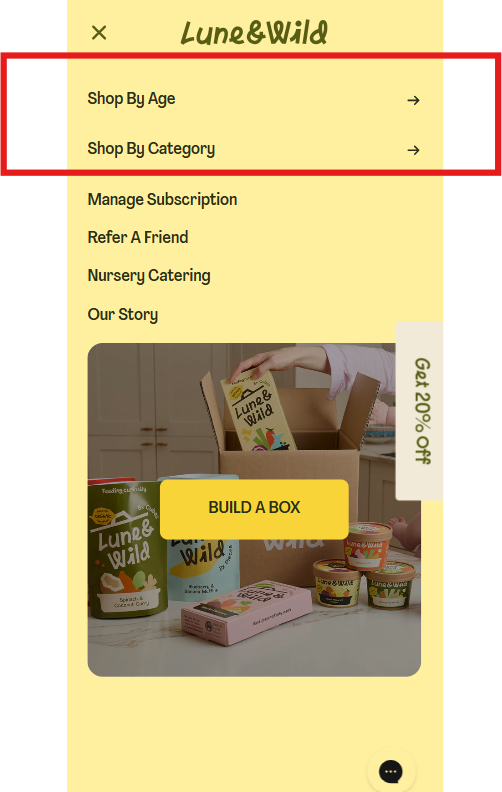Why test before peak period?
BFCM has stretched beyond one weekend, with online sales beginning earlier and lasting longer, which expands your experimentation window and the scale of impact from winning variants. Peak season traffic dramatically increases sample sizes, making this the best time of year to validate offers, UX, and lifecycle messaging with statistically robust A/B tests. Planning, testing, and implementing before the surge ensures resilience under load and better conversion economics when it matters most.
The Black Friday - Cyber Monday surge isn't just about traffic; it’s about testing what moves revenue before the season ends. Smart brands treat it as a live conversion lab by experimenting, learning, and compounding wins before Christmas.
Here are ten high‑impact experiments your D2C brand should run right now.
1. Rewrite Your Homepage Headline (5-10 min change)
Why test it: Clarity converts. Cleverness kills comprehension. If visitors can’t grasp what you sell, who it’s for, and how it helps within five seconds, they’ll leave.
Experiment: A/B test a new hero headline that answers those three questions immediately. Use the simple but effective pattern:
**“A [product] for [audience] that [benefit] , without [pain point].”Before: “Shine Brighter This Season”
**After: “**A natural skincare routine for sensitive skin that hydrates deeply, without harsh chemicals.”
Goal: Lift homepage engagement, reduce bounce rate, and increase click‑through to PDPs by clarifying the core value proposition within seconds.
2. Replace Blanket Discounts with Profitable Promotions
Why test it: Sales volume means nothing if you’re giving away margin. Profit per visit is what counts.
Experiment: Swap “10 or 20% Off Everything” for a value‑rich Gift With Purchase or tiered bundle deal. For example, offer a 3‑pack bundle to lift AOV and reduce fulfilment cost per unit.
Goal: Maintain margins while encouraging larger baskets and a healthier bottom line.
3. Test Giftable Merchandising Over Straight Discounts
Why test it: Presentation changes perception. Better merchandising often beats site‑wide discounts in driving gifting intent.
Experiment: Compare control pages against variants with gift badges (“Perfect for your sister”), pre‑bundled gift sets, or “Ships by [date]” urgency copy.
Goal: Drive higher impulse gifting without blunt discounting.
4. Rename Shipping Options to Create Perceived Value
Why test it: Copy costs nothing but can change perception dramatically.
Experiment: Rename generic labels into seasonal or benefit‑driven ones.
For example:
- “Free Shipping” to “Fast + Free Shipping”
- “Standard Shipping” to “Christmas Guaranteed Delivery”

Goal: Increase selection of higher‑margin shipping tiers and lift perceived service value.
5. Add Discounts Directly in Product Names
Why test it: Speed beats perfection. A quick naming test can outperform elaborate discount creatives.
Experiment: Add promo context right within Shopify product titles like
“Holiday Pack – 20% Off”. Track CTR from collection pages and cart adds.
Goal: Boost visibility of BFCM offers without design overhead.
6. Reorganise Navigation Around Shopper Intent
Why test it: Many stores mirror their internal product structure, not the customer’s mindset.
Experiment:
Create user‑centred navigation paths such as
“Shop by Age”, “Shop by Skin Type”, or “Best Gifts for Him/Her”.

Lune & Wild has mastered this strategy by structuring their main navigation around real customer behaviour. Their “Shop by Age” category mirrors how parents naturally shop for their children’s meals, helping them find suitable products quickly and intuitively.
Goal: Reduce cognitive load, speed product discovery, and improve PDP entry rate.
7. Separate Shopping and Learning Paths (Niche products requiring education)
Why test it: Not every visitor is equally ready to buy. Mixing education and purchase paths confuses both.
Experiment: Split the top‑level navigation into “Shop” versus “Learn”. Send high‑intent users directly to products while guiding curious visitors through content.

Thuya NYC implements the SHOP, LEARN approach on their mobile nav
Goal: Decrease funnel friction and lift conversion among ready buyers.
8. Make Your Mobile Navigation Instantly Scannable
Why test it: Mobile traffic dominates BFCM. If menus require guesswork, you’re losing sales.
Experiment: Enrich nav labels with colours, icons, or typography cues to make each section instantly recognisable. Measure clicks per visit and exit rates.
Goal: Improve mobile navigation efficiency and cut drop‑offs mid‑journey.
9. Early Access and VIP Segmentation
Why test it: Rewarding loyal buyers drives predictability and emotional uplift.
Experiment: Run an A/B test between VIP early‑access campaigns and general public sales. Gate early access via email or SMS sign‑ups, then analyse conversion and repeat‑purchase rates.

Oliver Brown UK implement the EARLY ACCESS BFCM sale for its Email subscribers
Goal: Lift revenue from loyal segments while smoothing load during BFCM.
Pro tip: Keep offers time‑boxed (e.g., “48‑hour VIP window”) to maximise urgency and exclusivity.
10. Shipping Thresholds and Urgency Bars
Why test it: Last‑minute buyers rely on clear delivery expectations.
Experiment:
- A/B test “Free shipping over £75” versus “Reduced shipping over £50”.
- Add a sticky “Order by [date] for Christmas delivery” bar across PDP and cart.
- Compare conversion rates, AOV, and checkout drop‑off across variants.
Goal: Drive faster conversions by pairing urgency with value perception.
How WIRO Helps You Win BFCM With Data-Led Experimentation
BFCM isn’t the time for guesswork and that’s where WIRO’s experimentation framework gives brands a competitive edge. As a Shopify Plus optimisation partner for high-growth home, lifestyle, baby, apparel, and luxury DTC brands, WIRO helps teams run high-impact tests fast, validate UX changes at scale, and turn peak-season traffic into measurable revenue lifts.
Our approach combines technical rigour, CRO expertise, and real-world commercial understanding:
- We design and implement experiments that actually reach statistical significance, even under heavy traffic loads.
- Our team benchmarks everything against margin, AOV, and conversion velocity, not vanity metrics.
- We identify the quickest paths to profit: offer structures, PDP layouts, nav patterns, and cross-sell mechanics tuned specifically for peak shopping behaviour.
- And most importantly, we ensure your Shopify Plus infrastructure is stable, fast, and conversion-ready before the surge hits.
As Amy Highland, WIRO’s Head of Operations, puts it:
“Peak season is where brands either expose their weaknesses or compound their strengths. Rigorous testing is the difference.”
Whether it’s re-architecting navigation, rewriting value props, optimising subscription flows, or pressure-testing your tech stack, WIRO ensures every change drives commercial impact.
BFCM becomes not just a sales moment but your strongest experimentation window of the year.
Final Word
Your BFCM playbook shouldn’t stop with launch day. Each of these experiments feeds insight into your Christmas and Q1 roadmap. Run them fast, measure impact, and double down where data proves momentum.
Success this season isn’t about massive discounts,it’s about smarter tests done earlier and scaled quickly.


.svg)





